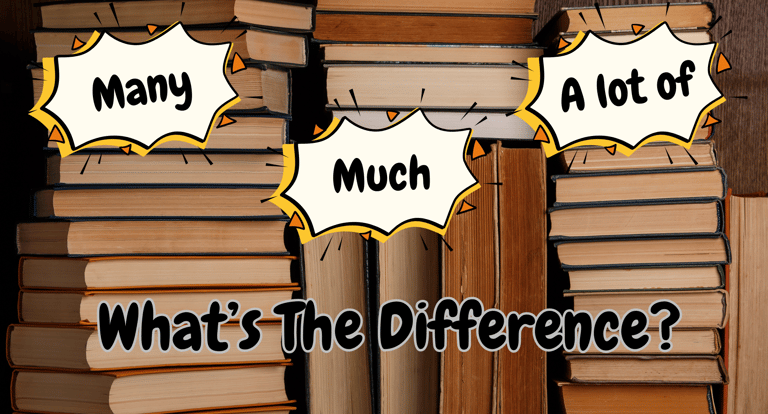Much, Many, and A Lot Of
What’s the Difference?
1 min read


Ever feel like much, many, and a lot of are playing a game of “guess where I belong”?
They all mean “a large amount,” but they don’t always show up in the same places.
Let’s break it down so you can finally use them with confidence.
1. The Core Rule
Much → uncountable nouns (things you can’t count one by one)
Example: much water, much money, much timeMany → countable nouns (things you can count)
Example: many books, many apples, many peopleA lot of → works with both countable and uncountable nouns
Example: a lot of coffee, a lot of chairs
2. The Casual Conversation Secret
In everyday English, we don’t often use much in positive sentences — we usually swap it for a lot of.
✅ “I have a lot of homework.”
❌ “I have much homework.” (Sounds formal or old-fashioned)
But! We do use much a lot in questions and negatives:
“Do you have much time?”
“I don’t have much money.”
3. Common Combinations
So much → “I drank so much coffee today.”
Too many → “There are too many people here.”
How much / How many → “How much sugar?” / “How many chairs?”
4. Quick Tip to Remember
Countable → many
Uncountable → much
Both → a lot of
Easy, right?
“Much,” “many,” and “a lot of” might seem small, but they can make your English sound much more natural when you use them correctly.
Remember: the key is knowing whether your noun is countable or uncountable — and when in doubt, a lot of is your best friend.
Keep practicing, and soon choosing the right one will feel automatic.
✨ P.S. Grammar sheets and worksheets for tricky topics like this are in the making!
Keep an eye on Kohaku English — you’ll be able to download and practice soon.
© 2025. All rights reserved.
